- Connecting audio
- Audio PC
- Raspberry & Co
- All in Ones
- Bluetooth
- Chromecast
- Streaming audio player
- Music server
- USB Audio
- Real-time audio over IP
- FireWire DAC
- Multi-channel DAC
- NAS
- Remote control
- Vinyl rippers
- Acoustic materials
- Active crossover
- Active speakers
- Single driver speakers
- Invisible speakers
- Sound card
- Digital room correction
- Headphone
- Portable media players
USB Audio
A DAC (the chip doing the actual DA conversion) does not understand USB at all.
You need a receiver translating the data as send over the USB to a protocol the DAC does understand. Most of the time this is I2S.
In essence, a USB audio receiver is a protocol converter.
PC’s, tablets, smartphones, they all have USB ports.
As a USB DAC receives the audio digital, you bypass the onboard audio.
A DAC with a USB input is the way to improve sound quality of these devices.
The fact that a device has a USB port does not mean your DAC will play.
First of all the device must be a USB host.
A NAS or a AVR with a USB port most of the time won't drive a USB DAC.
You can attach a USB thumbdrive or even a HD but not a DAC.
You need a USB audio driver to send the audio over the USB to the receiver of the DAC.
OSX and Linux have a native mode USB audio class 2 drivers (UAC2).
If the DAC is UAC2 compliant, you can connect it straight away.
UAC2 means you can play audio with a sample rate > 96 kHz over the USB.
In April 2017, an update of Win10 finally brought native mode drivers.
On older versions you need a third party driver to use UAC2
Not all USB-DAC’s are UAC1/UAC2 compliant.
Some do feature a proprietary driver.
This is becomming rare.
Check if this driver is available for your operating system.
A detailed description of how USB audio works can be found in the Reference section.
Android tablets and smartphones are a bit different.
Android 5 supports USB audio in host mode but no full UAC1/2 support at the present.
Android 8 looks to be fully UAC1 compliant
More about USB audio on Android
Connecting
There are several ways to connect a PC to your audio using USB.
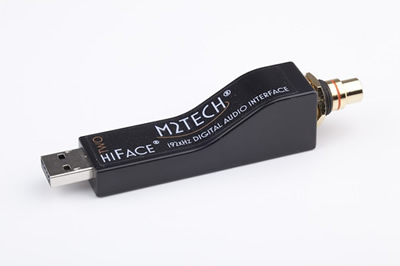
The digital input of traditional audio gear is SPDIF.
Most PC's don't have a SPDIF out.
You need a bridge between the USB and the SPDIF.
Converting to AES/EBU also exist as this is the standard in the pro-world.
If you are happy with your current DAC or receiver, this is a good solution.
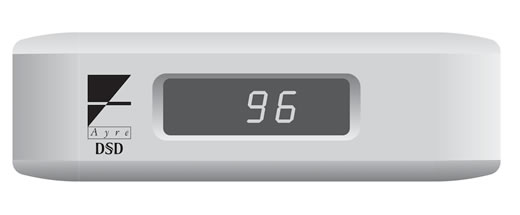
Ayre QB9
A DAC has a digital input by desin. SPDIF (optical or electrical) and AES/EBU are the standard inputs. Add a USB input to the DAC and you can connect it to PC.
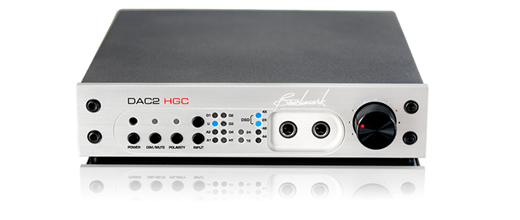
Benchmark DAC2
Today it is common to include a pre-amp.
Hence volume control and a head phone out .
Most of the time inputs like SPDIF and Toslink are supported as well.
As it is a DAC + pre-amp, it might even have an anlog input too.
Indeed as our audio is digital you need an pre-amp with digital inputs.
USB Amplifier
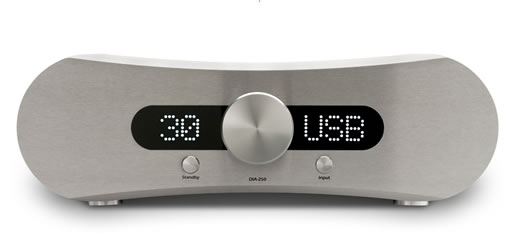
Gato Audio DIA-250 Integrated Amplifier
Next logical step is to add a power amp and you have an integrated amp with digital input.
All the digital inputs
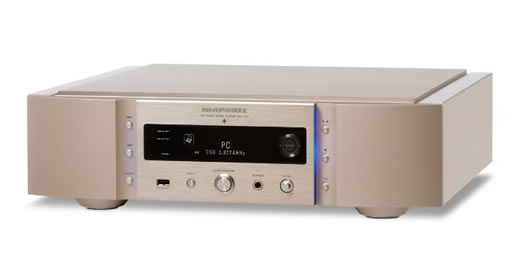
Marantz NA-11S1
Streaming: AirPlay / DLNA (certified V1.5)
Internet: Spotify /last.fm
USB DAC: asynchronous USB 24/192 (driver for Windows)
USB port for iDevices
DoP (DSD over USB) DSD64/128
Remote app: iDevice / Android
Resolution
In the early days USB audio was limited to 16 bits/48 kHz max.
Today 32 bit / 768 kHz is supported.
A common source of confusion is the version of the bus (USB 1,2 or 3) and the USB audio standard (1 or 2).
USB Audio Class 1 standard (1998)
This standard allows for 24 bits/96 kHz max.
The standard itself doesn't impose any limitation on sample rate.
Class 1 is tied to USB 1 Full Speed = 12 MHz
Every millisecond a package is send.
Maximum package size is 1024 bytes.
2 channel * 24 bit * 96000 Hz sample rate= 4608000 bits/s or 576 Byte/ms
This fits in the 1024 byte limit.
Any higher popular sample rate e.g. 176 kHz needs 1056 bytes so in excess of the maximum package size.
All popularr operating systems support USB Audio Class 1 natively.
This means you don’t need to install drivers, it is plug&play.
All support 2 channel audio with 24 bit words and 96 kHz sample rate
USB Audio Class 2 standard (2009)
USB Audio Class 2 additionally supports 32 bit and all common sample rates > 96 kHz
Class 2 uses High Speed (480 MHz). This requires USB 2 or 3.
As the data rate of High Speed is 40 X Full speed, recording a 60 channel using 24 bits at 96 kHz (132 Mbit/s) is not a problem.
Using High Speed USB for playback there are no limits in resolution.
It is downwards compatible with class 1.
From mid-2010 on USB audio class 2 drivers are available in OSX 10.6.4 and Linux.
Both support sample rates up to 384 kHz.
Companies like Thesycon or Centrance have developed a USB Class 2 Audio driver for Windows.
This was necessary because Microsoft simply didn’t support UAC2.
In April 2017, an update of Win10 finally included UAC2 drivers. It is the same driver as developed by Thesycon.
If you use older versions of Win, you still need a third party driver.
Adaptive or asynchronous synchronization
The audio data is send over the USB in isochronous mode.
Each frame contains a certain amount of data.
The volume of the data is about equal to a real time stream but it arrives in packages at distinct intervals (the send rate of the bus).
In adaptive mode the PC controls the amount of data send. As a consequence the DAC has to adapt its speed to avoid buffer over/under run.
In asynchronous mode the DAC sets up a feedback loop telling the PC how much data to send.
This allows for implementing a fixed clock of high quality in the DAC.
In principle asynchronous USB allows for an implementation with very low jitter.
This is what probably differentiates between an asynchronous USB DAC and an asynchronous USB to SPDIF converter. The moment you use a converter you move the clock out of the DAC.
More details
Things to look for
When buying a USB DAC always check the specs of the USB input.
DAC and USB specs
Lots of people think that a spec like 24 bit/192 kHz upsampling DAC applies to the USB input as well only to find out they get no sound at all when playing high res recording in their native format using the USB input.
This spec says what the DAC chip set is capable of and has nothing to do with the accepted input over the USB or any other digital input.
If there is no explicit information about the capabilities of the USB input, you better assume it is limited to 16 bit/48 kHz.
Asynchronous
Lots of people think that if it is an asynchronous DAC, this applies to the USB.
This is not necessarily the case. Asynchronous Sample Rate Conversion is a noise shaping technique to deal with input jitter. DACs using the ESS Sabre DAC often uses this technique.
But is says nothing about the synchronization used by the USB.
If the manufacturer doesn't state explicitly to use asynchronous USB you better assume it is adaptive mode.
Except for entry level models, almost all USB DACs today support 24 bit.
Even if you don’t have 24 bit sources (might change in the near future) a 24 bit depth is beneficial when using digital volume control.
The bit depth (16 or 24) of a DAC is a nominal value.
It is not a performance metric.
All it says is that the DAC accepts samples with a 16 or a 24 bit word.
Not to be mistaken for being able to resolve this word to the last bit.
Will playing 16 bits sources on a 24 DAC affect sound quality?
Very unlikely, all what is done is padding 8 zero’s too the 16 bits to make it a 24 bit word.
In fact there might even be a benefit, if you apply digital volume control, you can chop off these eight zero’s (48 dB reduction) without losing resolution.
More technical information about USB audio can be found here.
Fundamentals of USB-Audio - XMOS 2017

